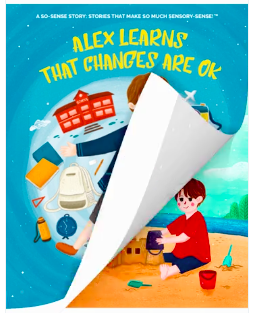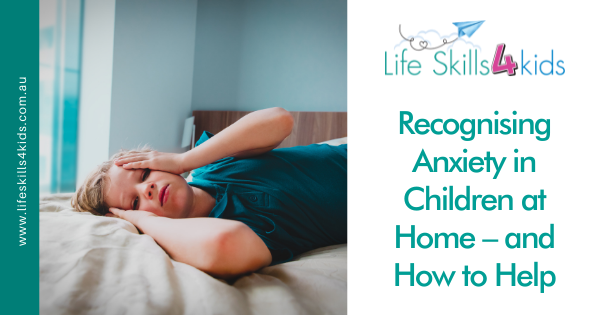As a parent, recognising anxiety in children at home is the first important step in being able to help them.
How can I recognise anxiety in my child?
Do any of these sound like your child?
- Clinging, crying and/or tantrums when you separate
- Excessive shyness, avoiding social situations
- Tired and irritable
- Constant worry
- Avoiding situations or places because of fears
- Feeling frightened, nervous or panicky all the time
- Difficulty sleeping
- Low appetite
- Lack of concentration
- Palpitations – when your heart feels like its racing
- Dry mouth
- Trembling
- Feeling faint
- Stomach cramps and/or diarrhoea
If the answer is yes to any of these, then your child might be experiencing anxiety. As you can see, the list is a long one and there are many factors which could indicate a person is anxious.
There are also things your young person might say, have a look at our article:
10 Things Kids Say that indicate anxiety
Finding out more about anxiety
- Find time to talk to your child about the anxiety they are experiencing
- take time to understand anxiety together
- identify what type of anxiety your child may be experiencing, have a look at our article about Understanding the extent of anxiety to help you check out the different categories of anxiety
- If you need extra support with this, use our free webinars to provide you with the information you need.
- You are not alone – anxiety is one of the most common mental health issues for both kids and adults alike. It can be tricky to identify in kids, as they will often be quiet, well behaved and stay under the radar of teachers and professionals.
- Anxiety is part of life
- Talk through how anxiety serves to protect us as human beings
- If you have a young child, you could make up a story that involves us running away from dinosaurs, sabre-toothed tigers and woolly mammoths! Think Ice Age!
- Anxiety is normal
- Remind yourself and your young person that anxiety is normal and we all feel anxious about some aspects of life
- Sometimes anxiety can just be a fear of trying something new or a change in routine – encourage your kids to work out steps of how they can cope with change and new things – these are both great skills to learn as kids and then we can use those skills as adults.
- Anxiety is important
- We can keep ourselves safe by listening to our anxiety
- Remember that anxiety is an important and healthy component of life
How can I help with my child’s anxiety?
Ok, so you’ve noticed that your child is experiencing anxiety and you’ve spent time talking with them about what is happening and what triggers their anxiety. Together you have discussed the positives of experiencing anxiety and now you need help in dealing with these experiences.
Strategies to help your child cope
#1. Use stories and your child’s imagination
- All kids thrive on using their creativity to help themselves
- Depending on your child’s age, you can use stories to provide them with protection and the bravery to deal with a situation they find stressful
- Think Harry Potter – could your child use a spell/ an invisibility cloak / a magical beast to help them through a particular situation
- Or how about a Superhero? Your child may identify with a particular Superhero – Superman or Wonder Woman? Or they might want to make up their own Superpowers for themselves!
- Fairy Tales & Disney films usually have a situation where the ‘hero’ has to overcome something to be able to become who they are destined to be – have fun finding ones that will help your young person deal with the challenges they face.
#2 Use a Checklist or Visual Images
- Just like a pilot who is about to fly a plane, your child may find it useful to make a checklist of what they need to do to be able to cope in a specific situation
- Work together to create a checklist with small steps in it to help your child understand a trigger for their anxiety and how they can use a step-by-step method to stay calm
- If your child is young or they prefer using visuals instead of writing, you can make up step-by-step visual prompts to help your child cope. For further information about the use of visuals have a look here.
#3 Learn about mindfulness and practice it together
- Mindfulness is becoming more popular and it’s about gaining an awareness of ourselves and our surroundings
- You can learn together how to do simple deep breathing exercises, a guided visualisation or very basic yoga poses
- One of our favourites is Cosmic Yoga which has some great yoga ‘adventures’ on their Youtube channel. The adventures are usually around 10-15 minutes long and they are a great way to combine mindfulness with imagination and stories!
#4 Use ‘Laddering’
- It is really tempting to allow your child to just avoid situations that may trigger anxiety – as parents we all want to protect our kids forever!
- But, by doing this we won’t allow them to experience challenges and overcome them, which is a vital life skill
- You can use a process called ‘laddering’ to help your child face a situation that causes anxiety and work towards overcoming it
- Firstly discuss a situation which triggers their anxiety and then break that down into small steps. Then do a small step over and over again until your child can deal with it and then move onto the next step or rung of the ladder only when they are ready; continue this process until they have climbed the ladder, one rung at a time and succeeded in facing their trigger situation and dealing with it.
#5 Practice being kind to yourselves
- Teach your child that sometimes it takes time and effort to work through a situation
- Work together on making mistakes and finding other ways to do things – it is vitally important to reassure your young person that we ALL make mistakes and we can learn from them (Find examples that your child can relate to about people who have made mistakes and carried on regardless eg Thomas Edison inventing the light bulb, Colonel Sanders opening his first KFC, Michael Jordan taking free throws … the list is endless!!)
- Practice self-compassion and kindness for yourself and teach your child to be kind to themselves too!
ALEX LEARNS FLIPBOOK
Alex loves school. He enjoys all the activities he does during the term such as swimming and soccer. He also loves holidays and all the fun things he gets to do while he’s not at school. The problem is, Alex doesn’t like changes. His tummy gets all tight and he gets a worry cloud that comes over his brain and makes it feel foggy. When the school term ends and holidays begin or when school is about to start again, Alex feels really worried and anxious.
When you purchase the Alex Learns that Changes are OK (Flipbook), you will receive a digital flipbook that gradually changes from one page to the next while listening to high-quality audio narration as if someone is flipping and reading the book for you!


